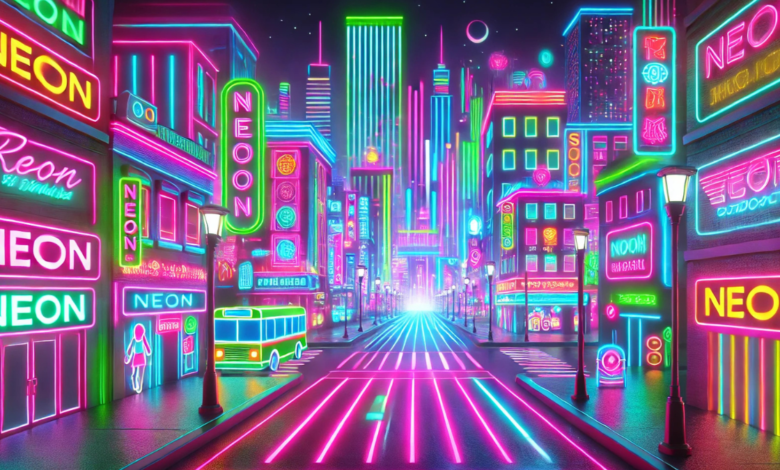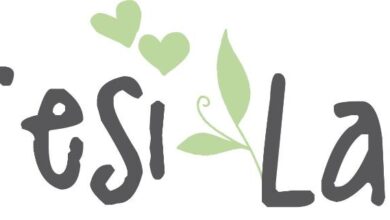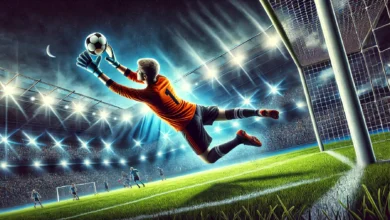The Vibrant World of Neon Colors: A Guide to Understanding and Using Them

Neon colors have a distinctive and eye-catching quality that makes them stand out in any setting. Whether it’s a glowing sign in the middle of a city or a bold fashion choice, neon colors have become an integral part of our culture. But what exactly makes neon colors unique, and why do they continue to capture our attention? In this guide, we’ll explore the science behind neon colors, their impact on modern culture, and how they continue to evolve.
Introduction to Neon Colors
What Are Neon Colors?
Neon colors are a specific category of bright, vivid colors that appear to glow or emit light, even in low-light conditions. This effect is due to their high fluorescent properties, which allow them to reflect and absorb light in a way that makes them seem more luminous than they are. Neon colors are most commonly seen in bright green, pink, yellow, orange, and blue, synonymous with energy, excitement, and fun.
The History and Science Behind Neon Colors
The concept of neon colors is rooted in the discovery of neon gas, first isolated in 1898 by British scientists Sir William Ramsay and Morris W. Travers. Neon, a noble gas, emits a bright, reddish-orange glow when electrified, and it became the foundation for neon signage that emerged in the early 20th century.
Neon signs became a popular form of advertising in the 1920s, with their glowing lights attracting attention in dark urban settings. Over time, the term “neon” expanded to describe all bright, fluorescent colors that mimic the luminous effect of neon lights. The science behind neon colors involves how certain pigments and materials interact with light, absorbing specific wavelengths and reflecting others, creating that unmistakable vivid hue.
Characteristics of Neon Colors
Brightness and Intensity
One of the most notable features of neon colors is their incredible brightness. Unlike typical colors that can fade or blend into the background, neon colors demand attention. Their fluorescent nature makes them seem to emit light rather than reflect it. This is why neon colors are often used for signs, warnings, and other applications where visibility is crucial.
The intensity of neon colors is visually striking and affects how the color is perceived. Bright neon pinks, greens, and yellows often evoke excitement and energy, making them perfect for environments requiring high levels of attention or creativity. The psychological effect of neon colors can influence moods, behavior, and even consumers’ decisions, which is why they are commonly used in branding and marketing strategies.
Psychological Impact of Neon Colors
Neon colors have a powerful psychological impact, making them ideal for evoking specific emotions. Colors like neon pink and neon green can induce excitement, vibrancy, and youthfulness. Bright neon hues are often associated with energy, creativity, and boldness, making them particularly popular in the entertainment, fashion, and digital design industries.
However, not all neon colors have the same effect. For instance, while attention-grabbing, neon yellow can sometimes feel overwhelming or harsh, mainly when used in large quantities. It is essential to understand how to balance neon colors in design or fashion. The psychological effect of neon colors can be a tool for marketers, event planners, and designers to influence perception and mood.
Applications of Neon Colors in Modern Culture

Neon Colors in Fashion and Design
Neon colors have significantly influenced fashion trends, especially streetwear, club culture, and the rave scene. Neon clothing, such as bright neon jackets, sneakers, and accessories, makes a bold statement and helps individuals stand out in a crowd. The 1980s, in particular, saw an explosion of neon fashion, with iconic items like neon leggings and oversized shirts making their way into mainstream fashion.
In addition to clothing, neon colors are prominent in accessories like sunglasses, jewelry, and handbags. Neon designs are used to add an element of fun, creating a sense of boldness and individuality. In today’s fashion industry, neon colors appear in runway shows, street style, and casual wear, proving that these vibrant shades are more than a passing trend.
Neon Lights and Signage
Neon colors are most famously seen in neon lights and signage, which have become a staple of urban life. Neon signs, often seen in bars, restaurants, and entertainment districts, are designed to attract attention from afar. Their glowing properties make them visible even in the dark, so they are often used in advertising. These signs are functional and have become part of a city’s identity, contributing to the unique aesthetic of places like New York City, Las Vegas, and Tokyo.
Beyond commercial uses, neon lighting has also gained popularity in interior design. Neon lights create vibrant, modern atmospheres in homes, offices, and entertainment spaces. They can be found in everything from decorative wall art to ambient lighting, adding a futuristic and bold edge to interior decor.
Neon Colors in Digital Media and Graphic Design
Neon colors have found their way into the digital world, frequently used in graphic design, advertising, and online branding. Websites, apps, and digital artwork often incorporate neon color palettes to create a sense of excitement and energy. These colors are particularly popular in tech startups and creative industries, where they convey innovation and forward-thinking.
Graphic designers utilize neon hues to create contrast, draw attention to specific elements, and evoke certain moods. The impact of neon colors is amplified in digital media because of the brightness and vibrancy that can be achieved on screens. Social media platforms like Instagram, TikTok, and YouTube also see an influx of neon-inspired visuals in posts and promotional content.
The Evolution and Future of Neon Colors
The Rise and Fall of Neon Colors
Neon colors have been widespread, with specific decades witnessing their peak use. In the 1980s, neon was everywhere—from fashion to advertisements—symbolizing the bold and rebellious spirit of the era. However, as design trends evolved, neon colors fell out of favor during the 1990s, replaced by more muted and minimalist palettes.
However, neon has returned in recent years, especially in digital design, fashion, and nightlife. The resurgence of retro aesthetics and the increased use of neon lights in branding and marketing have breathed new life into these vibrant shades. As technology advances, we may see new forms of neon colors emerge, driven by innovations in lighting and materials.
The Future of Neon Colors in Design and Culture
The future of neon colors is bright, especially as designers and brands continue to explore innovative ways to use them. The rise of sustainable practices may lead to eco-friendly neon pigments and materials, providing a more environmentally conscious way to create these striking colors. Additionally, neon colors will likely continue to be a driving force in digital and physical spaces, from augmented reality to interactive signage.
As our visual world becomes increasingly digital, neon colors will likely remain an essential tool in design. Their ability to stand out, evoke emotion, and make a statement ensures that neon colors will continue influencing art, fashion, branding, and technology for years.
Conclusion
Neon colors have long held a unique place in our visual culture. From their scientific origins in neon gas to their widespread use in fashion, design, and digital media, these bright, vibrant hues capture attention and evoke emotion. As trends continue to evolve, neon colors will remain a symbol of boldness, creativity, and energy, continuously shaping how we experience the world.
FAQs
Q: What are neon colors made of?
A: Neon colors are made from pigments and dyes that exhibit fluorescent properties, meaning they absorb light and reflect it in a way that makes them appear to glow.
Q: Are neon colors harmful to the eyes?
A: Neon colors are not detrimental to the eyes, but excessive exposure to bright neon lights can cause eye strain.
Q: Can neon colors be used in interior design?
A: Neon colors are increasingly popular in modern interior design, creating vibrant and bold atmospheres.
Q: Why are neon signs so prevalent in cities?
A: Neon signs are popular because of their visibility, especially in dark urban environments. They are also associated with energy and excitement, making them perfect for advertising and branding.
Q: How do neon colors affect mood and emotions?
A: Neon colors often evoke excitement, energy, and creativity, creating a sense of vibrancy and boldness.
You May Also Read: https://ventsbuz.com/yard-sales-near-me/





